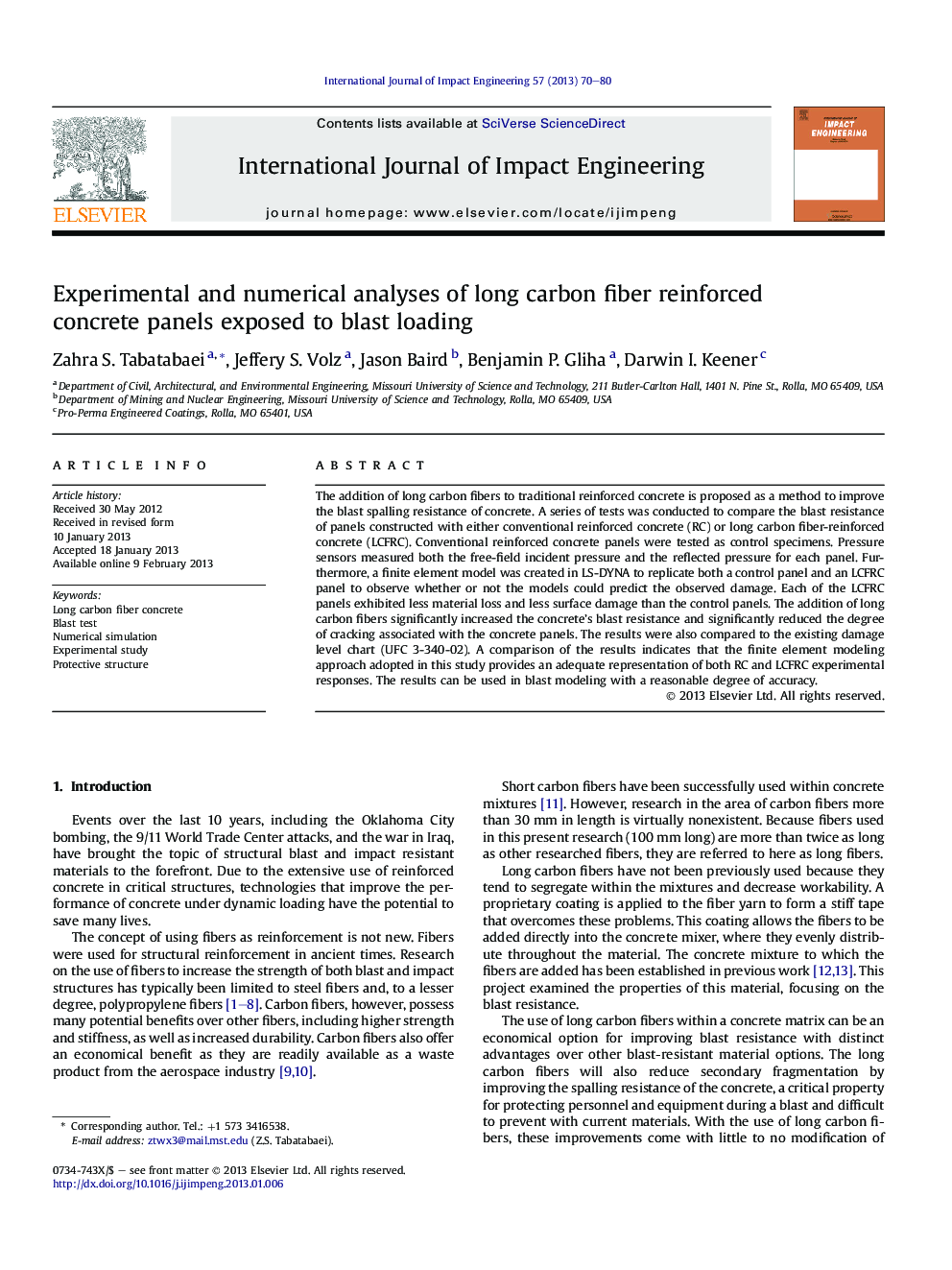| Article ID | Journal | Published Year | Pages | File Type |
|---|---|---|---|---|
| 782991 | International Journal of Impact Engineering | 2013 | 11 Pages |
The addition of long carbon fibers to traditional reinforced concrete is proposed as a method to improve the blast spalling resistance of concrete. A series of tests was conducted to compare the blast resistance of panels constructed with either conventional reinforced concrete (RC) or long carbon fiber-reinforced concrete (LCFRC). Conventional reinforced concrete panels were tested as control specimens. Pressure sensors measured both the free-field incident pressure and the reflected pressure for each panel. Furthermore, a finite element model was created in LS-DYNA to replicate both a control panel and an LCFRC panel to observe whether or not the models could predict the observed damage. Each of the LCFRC panels exhibited less material loss and less surface damage than the control panels. The addition of long carbon fibers significantly increased the concrete's blast resistance and significantly reduced the degree of cracking associated with the concrete panels. The results were also compared to the existing damage level chart (UFC 3-340-02). A comparison of the results indicates that the finite element modeling approach adopted in this study provides an adequate representation of both RC and LCFRC experimental responses. The results can be used in blast modeling with a reasonable degree of accuracy.
► Full-scale experimental blast testing of concrete panels with 34 kg of TNT. ► Blast testing of reinforced concrete panels containing carbon fibers measuring 100 mm in length. ► Panels containing carbon fibers outperformed control panels by a factor of 10. ► Analytical modeling of full-scale blast testing approximated experimental results.
